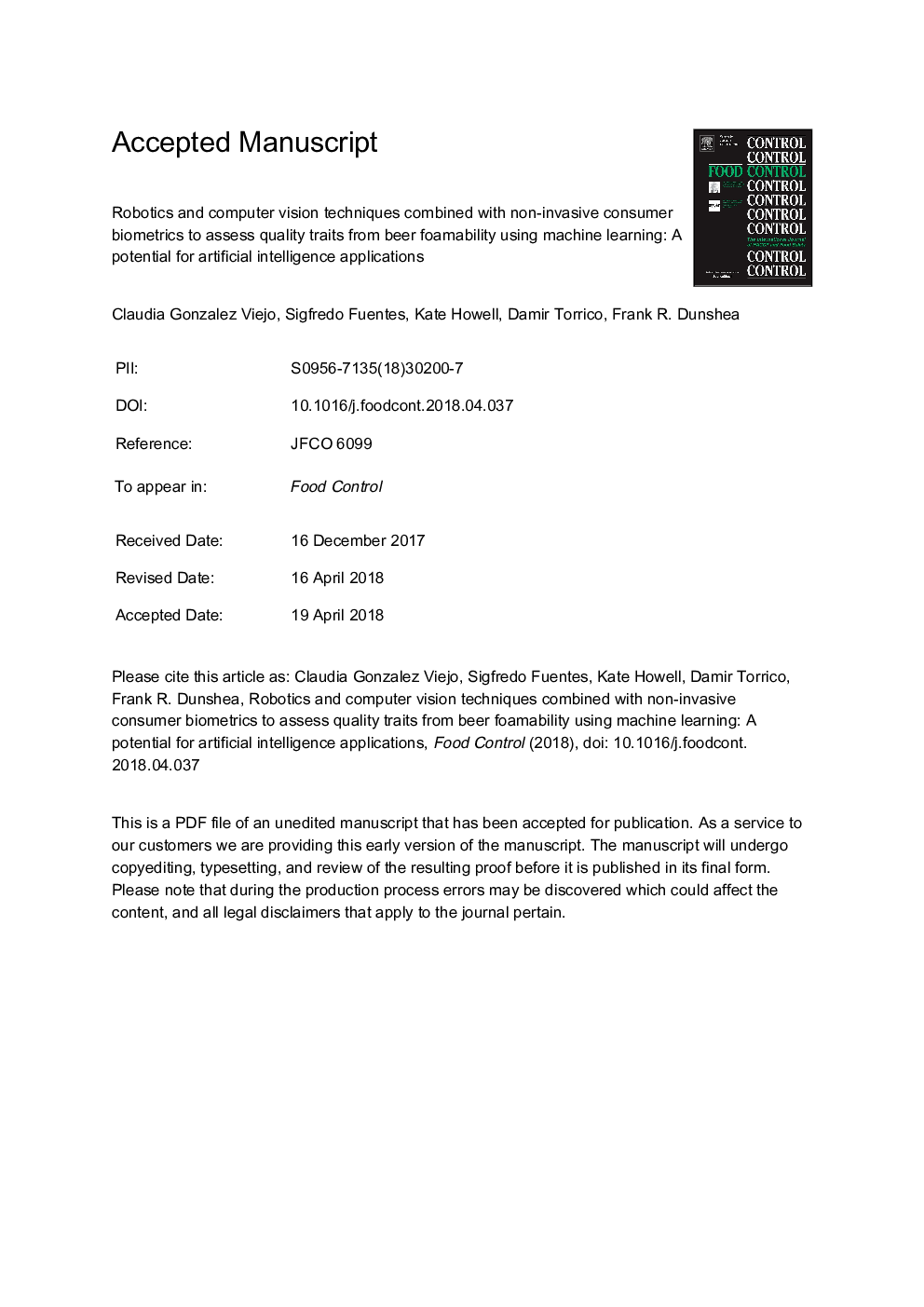| کد مقاله | کد نشریه | سال انتشار | مقاله انگلیسی | نسخه تمام متن |
|---|---|---|---|---|
| 8887814 | 1628372 | 2018 | 26 صفحه PDF | دانلود رایگان |
عنوان انگلیسی مقاله ISI
Robotics and computer vision techniques combined with non-invasive consumer biometrics to assess quality traits from beer foamability using machine learning: A potential for artificial intelligence applications
ترجمه فارسی عنوان
تکنیک های رباتیک و دید در کامپیوتر همراه با بیومتریک مصرف کننده غیر تهاجمی برای ارزیابی ویژگی های کیفی از فوم بودن آبجکت با استفاده از یادگیری ماشین: پتانسیل کاربرد برنامه های هوش
دانلود مقاله + سفارش ترجمه
دانلود مقاله ISI انگلیسی
رایگان برای ایرانیان
کلمات کلیدی
بیومتریک، کیفیت آبجو، هوش مصنوعی، تست مصرف کننده بصری، شبکه های عصبی مصنوعی،
موضوعات مرتبط
علوم زیستی و بیوفناوری
علوم کشاورزی و بیولوژیک
دانش تغذیه
چکیده انگلیسی
Foam-related parameters greatly influence other sensory attributes of beer such as aromas, flavors and mouthfeel; therefore, the visual assessment of beers is one of the most important quality traits, since it creates the first impression of consumers in determining the willingness to taste the product and perceived quality. Sensory analysis has been extensively used to assess consumers acceptability; however, this can only obtain their self-reported conscious responses. Therefore, biometric techniques have been used to assess the subconscious responses, which provide more information from consumers when integrated with sensory evaluation questionnaires. In this study, non-invasive biometrics along with a sensory questionnaire were used to assess consumers perception to visual attributes of 15 beers from pouring videos obtained using the RoboBEER (automatic robotic pourer). The sensory session was conducted with 30 participants using an integrated camera system, which consists of an infrared thermal camera and video recording coupled with a Bio-sensory computer application (App) and an eye tracking device. Objective physical parameters from beer pouring were obtained using the RoboBEER and computer vision algorithms. Results from the Just About Right (JAR) and acceptance tests showed that consumers preferred top fermentation beers, which have a medium foam height and stability, and tend to highly penalize bottom fermentation beers with lower foam. The principal components analysis explained a total of 52% of data variability. A correlation matrix was developed to assess significant correlations between the conscious, subconscious and physical data such as the positive correlation between perceived quality and heart rate, and the negative correlation between foam stability liking and foam drainage. Furthermore, an artificial neural network model (ANN) with 82% accuracy was developed using 28 parameters from the subconscious and objective physical data as inputs to classify beers per participant according to their level of liking of foam height (low and high). The combined use of these techniques showed to be an accurate and rapid tool to assess the visual sensory perception of beers based on the RoboBEER and biometric outputs from consumers with significant potential applications for fast screening within the beer industry.
ناشر
Database: Elsevier - ScienceDirect (ساینس دایرکت)
Journal: Food Control - Volume 92, October 2018, Pages 72-79
Journal: Food Control - Volume 92, October 2018, Pages 72-79
نویسندگان
Claudia Gonzalez Viejo, Sigfredo Fuentes, Kate Howell, Damir Torrico, Frank R. Dunshea,
